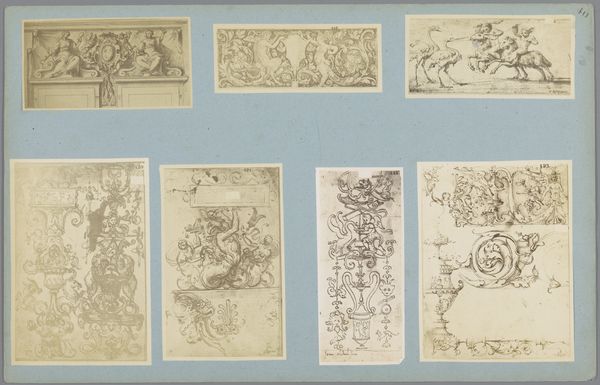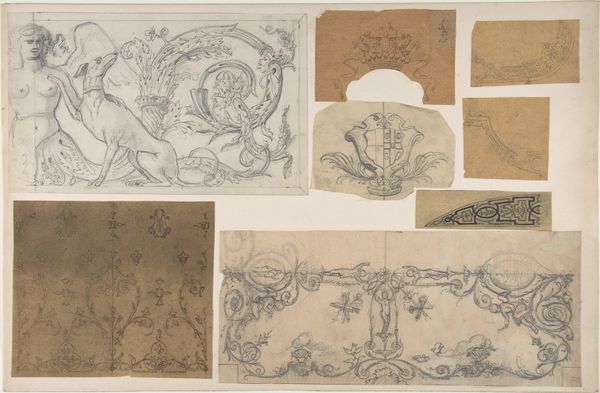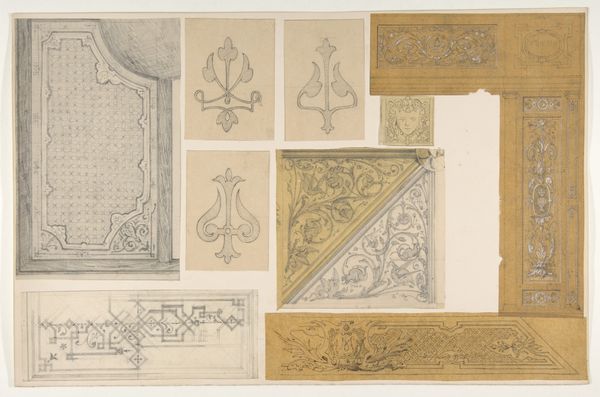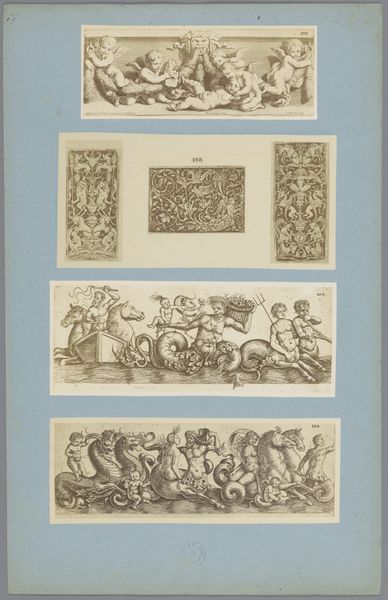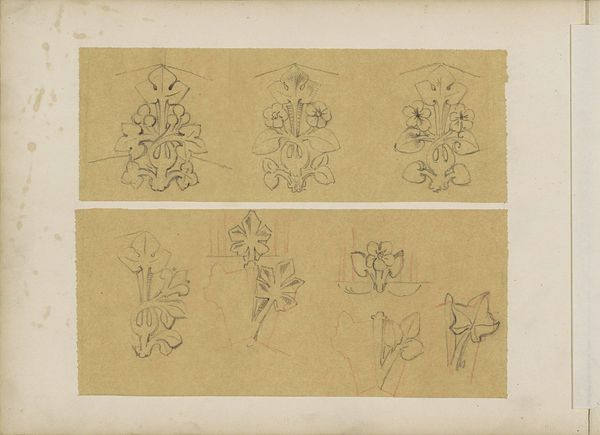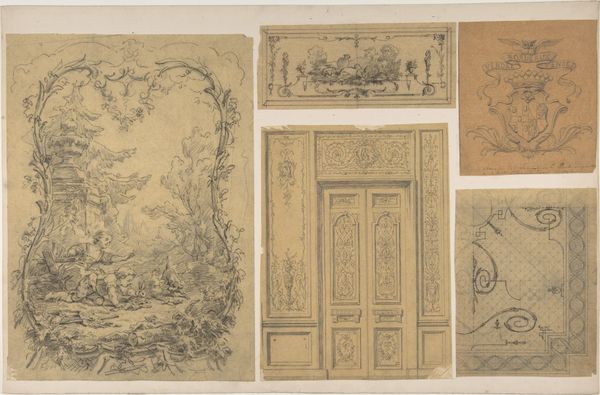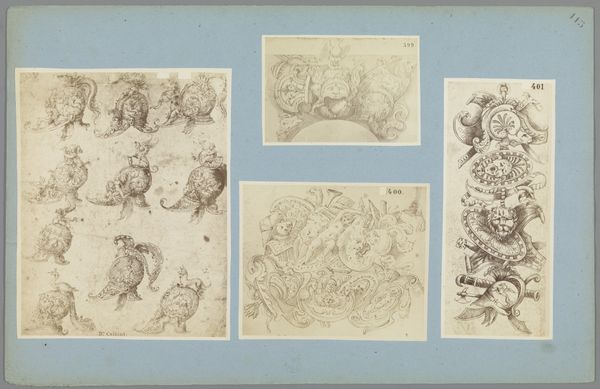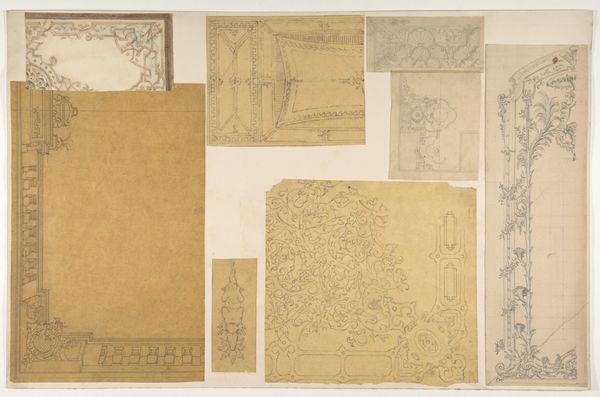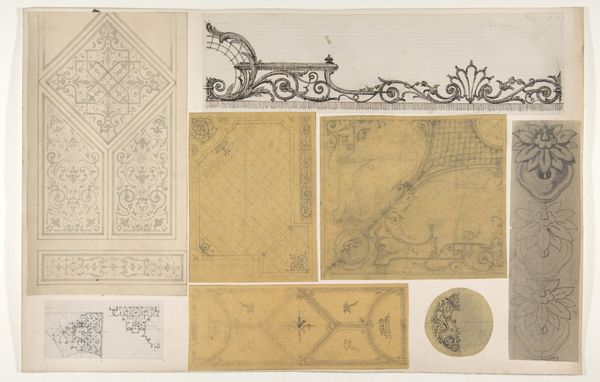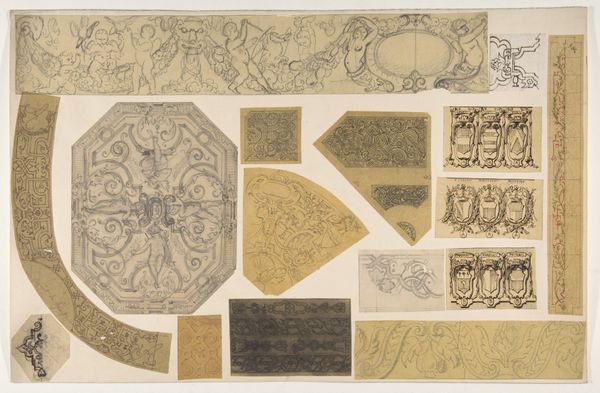
Zes fotoreproducties van tekeningen van ornamenten, vermoedelijk wanddecoraties c. 1875 - 1900
0:00
0:00
drawing, graphic-art, ornament, lithograph, print, etching, paper
#
portrait
#
drawing
#
graphic-art
#
ornament
#
lithograph
# print
#
etching
#
paper
#
form
#
line
#
decorative-art
#
miniature
Dimensions: height 318 mm, width 499 mm
Copyright: Rijks Museum: Open Domain
Curator: This is a fascinating collection from between 1875 and 1900, called "Six Photo Reproductions of Ornament Drawings, Likely Wall Decorations." They're rendered using a mix of graphic arts like lithography and etching, all on paper. What leaps out at you, immediately? Editor: Frivolity. That’s the word. A sort of charming visual cacophony. Tiny figures climbing up twisting vines and urns overflowing with… stuff. It's like looking at the architectural equivalent of cotton candy. Curator: Cotton candy, yes! They evoke such a tactile sense, don't they? These miniature designs showcase a real preoccupation with form, leaning heavily into the decorative arts style. What intrigues me is the anonymous nature of the artist—makes you wonder who dreamt these up, and for what grand space? Editor: The lack of a signature lends an air of universality. These patterns feel less like personal statements and more like templates, modular pieces that could be adapted for countless spaces. The precision of the line work is mesmerizing, each swirl and flourish meticulously rendered. The composition seems intended to draw the eye upwards, to create an illusion of height. Curator: Right? The eye certainly travels. Imagine these adorning the walls of a grand salon, maybe framing mirrors or doorways. Each reproduction seems to dance with a unique energy, from the playful asymmetry to the rigidly structured patterns. Editor: Absolutely. Notice, too, how the reproductions echo one another, despite their variations. Motifs recur—vases, figures, swirling tendrils—creating a visual rhythm across the whole arrangement. A dialogue, of sorts, between ornamentation and utility. They are forms hinting to me a certain tension between surface embellishment and underlying architectural function. Curator: So well observed. To think of the hours poured into each line, each carefully placed detail. It whispers to me of artistry intertwined with functional beauty and creative dreams intended to bring joy and life to those who dwell within those walls. Editor: Yes, indeed. Ultimately, though unsigned, this collection of ornament studies serves as a valuable resource for decoding an era where design was deeply intertwined with art.
Comments
No comments
Be the first to comment and join the conversation on the ultimate creative platform.
